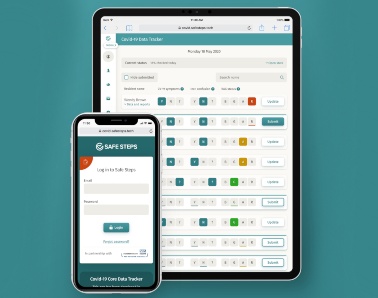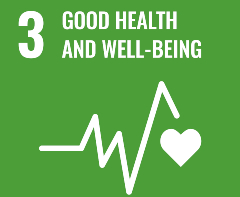
Protecting older people in residential care homes during the pandemic
Health Innovation Manchester (HInM) is working with health and social care practitioners across the Greater Manchester region to protect older people in residential care with the use of digital technology.
Taking additional measures to protect older people’s health and wellbeing
Before the pandemic hit, Health Innovation Manchester had started to roll out the Safe Steps app to prevent falls among care home residents.
Once the severity of the pandemic was realised, Safe Steps was changed to become a digital tool with which to track care home residents’ COVID symptoms. The tool is now the Digital Care Homes C19 tracker and the NIHR Applied Research for Collaboration for Greater Manchester (ARC-GM) is evaluating the impact of its use in the region. The NIHR ARC-GM is based in HInM and led by University of Manchester academics. The tracker is currently being used by more than 70 nursing and residential homes in Greater Manchester, with more coming on board every day.
“As well as tracking COVID symptoms, the tracker helps staff record other important information including ‘soft signs’ of health deterioration in residents” says Professor Dame Nicky Cullum, ARC-GM Director and Theme Lead for Organising Care and Professor of Nursing at The University of Manchester. “The soft signs include things like changing levels of confusion and other information collected includes whether residents have end of life care plans in place.”
Introducing the Digital Care Homes C19 tracker across Greater Manchester

The Digital Care Homes C19 tracker also provides vital information to the borough where the resident lives. So far, it is being introduced in Manchester, Salford, Stockport and Tameside & Glossop, helping clinical leads in those areas to identify COVID-19 hotspots and where there are clusters of care home residents showing signs of coronavirus.
The tracker also provides information about the availability of personal protective equipment (PPE) and local staffing levels to provide an overarching view of what is happening at borough level and enable rapid response to shortages.
“The project has been one way of finding out how ‘digitally enabled’ care homes are and Health Innovation Manchester had to ensure hardware was available and that homes were online, ahead of training care home staff to use the tracker,” says Professor Cullum.
Collective quantitative data
The evaluation uses mixed methods, that is a combination of quantitative data from the tracker, and qualitative data collected via interviews with users of the tool in care homes and primary care and with the clinical leads in the boroughs. Interviewees are being asked for their views and experiences of using the COVID tracker and how they feel it has impacted on their decision making.
“We are regularly feeding back our findings to Health Innovation Manchester so that hopefully they can learn how to increase the likelihood that the tracker is taken up and used effectively when it is deployed in future boroughs” Professor Cullum says.
“We are also building a platform for future care home research with colleagues from the University of Salford and Manchester Metropolitan University, and have established the Greater Manchester Care Homes Research Group as a new forum to stimulate collaboration.”
The NIHR (ARC-GM) is a five-year health and social care research programme which launched in autumn 2019. The programme’s main focus is on the Greater Manchester population and local NHS and health and social care needs and is based around five key themes: mental health; healthy ageing, digital health; organising care; and economic sustainability of the health and care system.
Find out more
- Read our “The importance of applied research during COVID” blog
- Browse our Health Innovation Manchester expert blogs
Meet the researchers
- Professor Dame Nicky Cullum, Professor of Nursing

